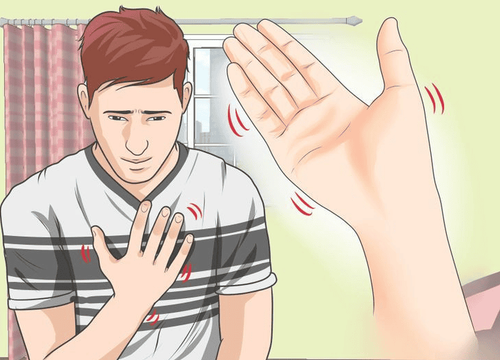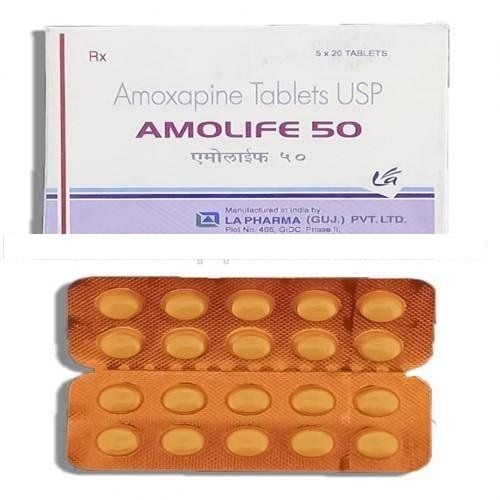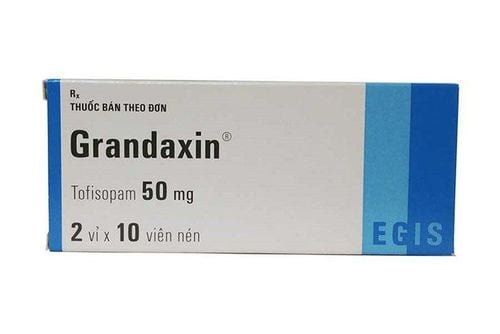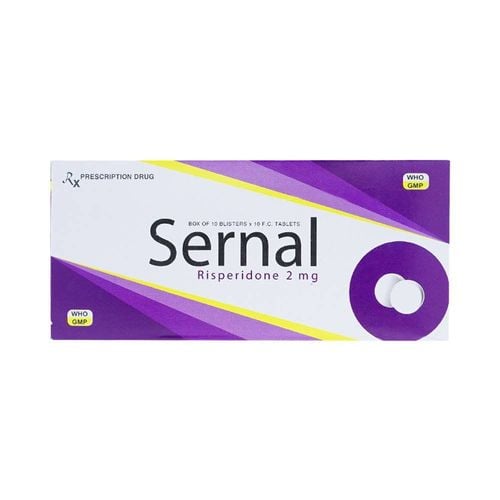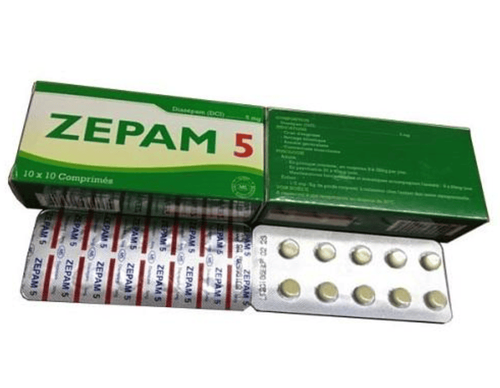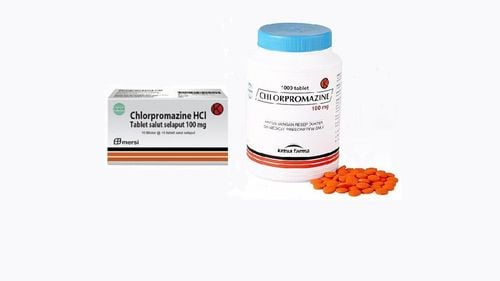This is an automatically translated article.
Risperstad is used in the treatment of psychosis and acute manic episodes associated with bipolar disorder. The active ingredient in the drug is Risperidone. Let's learn more about the uses, usage and notes when using Risperstad through the article below.
1. What are Risperstad 1 and Risperstad 2?
Risperstad 1 and 2 belong to the group of psychotropic drugs, which are prepared in the form of film-coated tablets. In particular,
Risperstad 1 drug contains the main ingredient is Risperidone 1mg and other excipients such as Lactose Monohydrate, Sodium lauryl sulphate, Microcrystallin cellulose, corn starch, Colloidal silica anhydrous, Magnesium stearate, White Opadry. The drug is prepared in white oblong tablets, one side has the word STADA and the other side is engraved. Risperstad 2 medicine contains the main ingredient Risperidone 2mg and other excipients such as Lactose Monohydrate, Sodium lauryl sulphate, Microcrystallin cellulose, corn starch, Colloidal silica anhydrous, Magnesium stearate, Opadry orange. The drug is prepared in pink-orange oblong tablets, one side has the word STADA and the other side is engraved.
2. Indications for taking Risperstad 1 and 2
Risperstad 1 and 2 are used in the following cases:
Treatment of acute and chronic schizophrenia. Treatment of emotional symptoms such as guilt, depression, and anxiety associated with schizophrenia. Treatment of mania associated with bipolar disorder. Treatment of behavioral disorders in patients with dementia. Treatment of autism in children and adolescents. Risperstad 1 and 2 should not be used in the following cases:
Patients with hypersensitivity to the ingredient Risperidone or to any of the excipients in the drug. Excessive use of barbiturates. Preparations containing opium or alcohol.
3. Dosage - How to take Risperstad 1 and 2
Risperstad is used orally and regardless of meals, the drug is used once or twice a day. The usual dose ranges from 1 mg Risperidone twice daily on day 1 in increments of 1 mg Risperidone twice daily up to a total dose of 6-8 mg Risperidone per day achieved in 3-7 days.
Elderly or renal/hepatic impairment use dose of 0.5mg Risperidone x 2 times/day.
Treatment of schizophrenia:
Adults:
The daily dose of Risperidone can be taken once or in 2 divided doses. Risperidone should be started at a dose of 2 mg/day. The dose may be increased to 4 mg of risperidone on the second day. Most patients respond well to 4-6 mg of Risperidone/day. This dose may be maintained or adjusted according to individual patient response. Doses above 10 mg of risperidone/day have not been shown to be more effective than lower doses and may cause extrapyramidal symptoms. Doses higher than 16 mg Risperidone/day should not be used because safety has not been evaluated. Elderly:
The recommended starting dose is 0.5 mg of Risperidone x 2 times/day. Dosage may be adjusted in increments of 0.5 mg to a maximum of 2 mg of Risperidone per oral dose. Risperidone should be used once a day. The starting dose is 2mg of Risperidone. If dose increase is required, it should be done after 24 hours and increased by 1 mg Risperidone/day. Efficacy of the drug is recorded in the range of 1-6 mg of Risperidone/day. Treatment of behavioral disorders in patients with dementia:
Should start with a dose of 0.25 mg Risperidone x 2 times/day. This dose may be increased by 0.25 mg Risperidone twice daily depending on the individual patient. The optimal dose for most people with dementia is 0.5 mg of Risperidone twice daily. However, some patients need more than 1mg of Risperidone twice a day to be effective. The maintenance dose may be administered once a day. As with all symptomatic treatments, continued use of risperidone must be assessed and adjusted on the basis of disease progression. Autism in Children and Adolescents
Dosage of Risperidone must be prescribed specifically for the individual patient's needs and response to therapy. The specific route of Risperidone use is as follows:
Children weighing < 20kg: use 0.25mg of Risperidone from days 1-3 and 0.5mg of Risperidone on days 4-14. The dose may be increased if necessary by 0.25 mg of Risperidone every 2 weeks and at intervals of 0.5 to 1.5 mg of Risperidone. Children weighing > 20kg: 0.5mg Risperidone on days 1-3 and 1mg Risperidone on days 4-14. The dose may be increased if necessary by adding 0.5 mg of risperidone over 2 weeks and the dose range from 1 to 2.5 mg of risperidone. For children < 45 kg, the dose can be adjusted higher with a maximum dose of 3.5 mg Risperidone/day. In general, signs of risperidone overdose are the result of an exaggerated effect on the pharmacological action of Risperidone. These are symptoms of tachycardia, drowsiness, sedation, hypotension and extrapyramidal symptoms... To improve this condition, the doctor will appoint to establish and maintain airway clearance and ensure provide adequate oxygen to the patient. Method of gastric lavage and giving activated charcoal or using an enema.
Regular cardiac monitoring is required, including ECG monitoring. Currently, there is no specific antidote for an overdose of Risperstad, so supportive measures should be used. Intravenous fluids or sympathomimetic drugs. If extrapyramidal symptoms are severe, anticholinergics should be used.
4. Risperstad 1 and 2 drug interactions
Before using Risperstad, the patient should list all the drugs or pharmaceuticals being used with other medical conditions to the doctor to have the appropriate drug use direction. Here are some interactions when taking Risperstad with other drugs.
Because Risperidone acts primarily on the central nervous system, patients should be cautious when combining Risperstad with drugs that affect the central nervous system and alcohol. Risperidone antagonizes the effects of dopamine agonists such as levodopa. Risperstad in combination with antihypertensive agents may potentiate the hypotensive effect of antihypertensive agents. Caution is advised when risperidone is combined with drugs that prolong the QT interval. Co-administration of risperidone with carbamazepine and other CYP3A4 inducers reduces plasma concentrations of the active antipsychotic fraction of risperidone. In this case, a dose adjustment of risperidone is required when starting or stopping carbamazepine and other CYP3A4 inducers. Caution should be exercised when combining furosemide diuretics with risperidone in elderly patients with dementia due to increased mortality.
5. What side effects does Risperstad cause?
During the use of Risperstad, patients may experience some unwanted side effects such as:
Common: Anxiety, dizziness, increased excitability, somnolence, extrapyramidal symptoms, headache, orthostatic hypotension, blurred vision, back pain, chest pain... Rare: Depression, decreased concentration, hypertonic reactions, paresthesia, diarrhea, gastritis, melena, hemorrhoids, decreased blood sodium, weight gain or loss, diabetes mellitus, amenorrhea, gynecomastia.
6. Precautions when using Risperstad
Patients with cardiovascular disease, history of epilepsy, cerebrovascular disease, spasticity, Parkinson's syndrome patients need to take a lower dose of Risperidone and start therapy at a low dose. Pregnant and lactating women, driving or operating machines are not recommended to use Risperstad. Hopefully with the information provided above, patients can have more useful information about the Risperstad drug line. Patients should always strictly follow the medication instructions and instructions from the doctor, pharmacist before using Risperstad, absolutely do not buy the drug at home, self-treatment may cause side effects. I don't want to affect my health.
Please dial HOTLINE for more information or register for an appointment HERE. Download MyVinmec app to make appointments faster and to manage your bookings easily.




